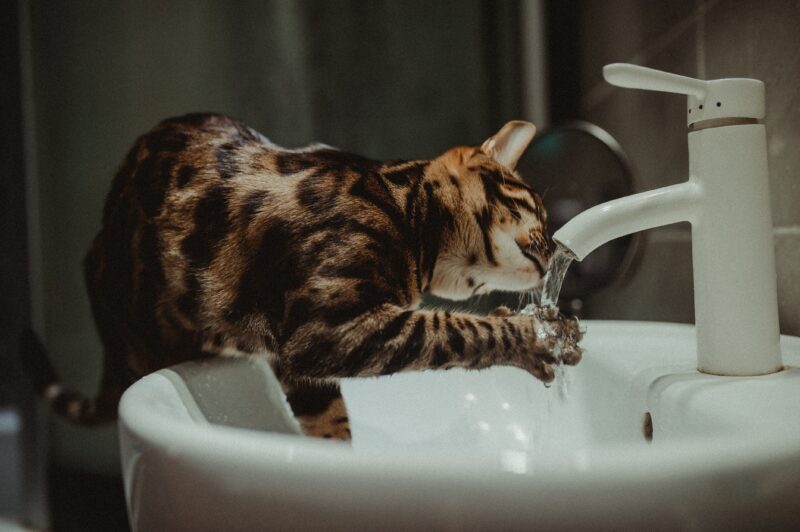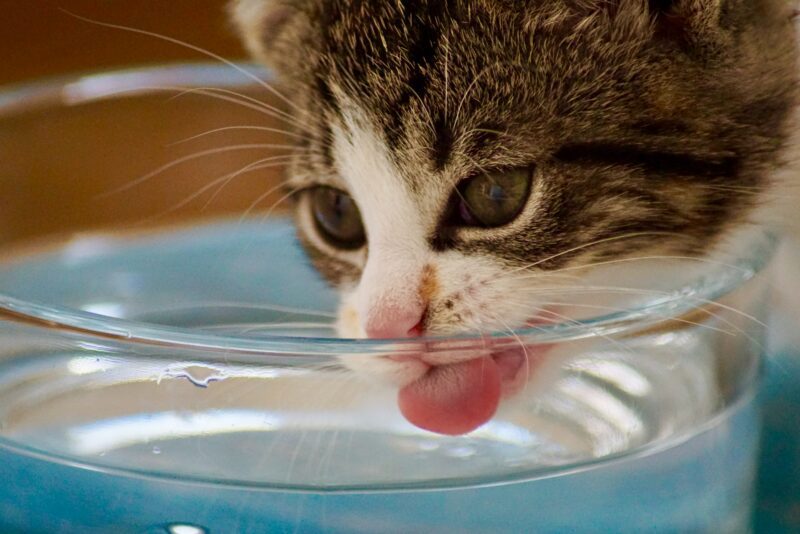As cat lovers, ensuring the well-being of our feline friends is a top priority. One often overlooked aspect of cat care is hydration. Adequate water intake is crucial for a cat’s overall health, impacting everything from kidney function to coat condition. In this comprehensive guide, we’ll explore the significance of water intake for cats and share creative ideas and products to encourage your furry companions to drink more water.
Section 1: The Significance of Water Intake for Cats
1.1. Kidney Health:
- Cats are prone to kidney issues, and proper hydration plays a key role in preventing kidney disease.
- Increased water intake helps flush out toxins and supports optimal kidney function
1.2. Urinary Tract Health:
- Adequate hydration reduces the risk of urinary tract infections and the formation of crystals in the urinary tract.
- Cats with a history of urinary issues can benefit significantly from increased water consumption.
1.3. Digestive Health:
- Water aids in digestion and helps prevent constipation, a common concern in cats.
- Cats on dry food diets may require extra water to compensate for the lower moisture content.
1.4. Weight Management:
- Hydration is essential for maintaining a healthy weight.
- Cats on wet food diets may naturally consume more water, contributing to weight control.
1.5. Coat and Skin Condition:
- Well-hydrated cats are more likely to have healthy skin and a shiny coat.
- Water is crucial for regulating body temperature and ensuring proper circulation.
Section 2: Understanding Cat Drinking Behavior

2.1. Cats and Water Preferences:
- Cats may be picky drinkers, and factors like water temperature and bowl location can influence their preferences.
- Some cats prefer running water, while others are content with still water.
2.2. Instinctual Behaviors:
- In the wild, cats often prefer running water sources to reduce the risk of contamination.
- Mimicking this natural behavior can encourage water intake in domestic cats.
2.3. Factors Affecting Water Consumption:
- Environmental factors, stress, and health issues can impact a cat’s water intake.
- Pay attention to changes in behavior and consult with a veterinarian if you notice significant shifts in drinking habits.
Section 3: Creative Ideas to Encourage Hydration
3.1. Invest in Cat Fountains:
- Cat fountains mimic flowing water, appealing to a cat’s instinctual preference.
- Choose a fountain with a quiet motor to avoid scaring off more timid cats.
3.2. Flavorful Ice Cubes:
- Freeze low-sodium chicken or tuna broth into ice cubes for a tasty and hydrating treat.
- Drop these flavored ice cubes into your cat’s water bowl for added appeal.
3.3. Interactive Water Play:
- Use a safe water spray or a dripping faucet to create an interactive water play session.
- Some cats enjoy batting at the water, inadvertently increasing their water intake.
3.4. Water-Infused Wet Food:
- Mix water into your cat’s wet food to increase overall water consumption.
- Gradually add more water to the food, creating a soupy consistency that many cats find irresistible.
3.5. Catnip-Infused Ice Treats:
- Freeze catnip-infused water into ice cube trays for a refreshing and enticing treat.
- Offer these ice treats during warmer months to keep your cat cool and hydrated.
3.6. Multiple Water Stations:
- Place water bowls in different areas of your home to provide options.
- Cats may be more inclined to drink if water is easily accessible throughout their territory.
Section 4: Products to Enhance Hydration

4.1. Cat Water Fountains:
- Explore various cat water fountain options, from basic models to those with adjustable flow rates.
- Fountains with filters ensure clean and fresh water, enticing cats to drink more.
4.2. Automatic Water Dispensers:
- Automatic water dispensers maintain a consistent water level.
- Some dispensers have wide, shallow bowls, ideal for cats who dislike deep water.
4.3. Interactive Drinking Bowls:
- Bowls with moving parts or hidden compartments can make drinking more engaging.
- Look for bowls that stimulate a cat’s curiosity, encouraging them to explore and drink.
4.4. Cat Drinking Tunnels:
- Drinking tunnels are designed to make drinking more fun for cats.
- The enclosed space may provide a sense of security, making your cat feel more comfortable while drinking.
4.5. Water-Activated Cat Toys:
- Some cat toys release water when played with, creating a playful incentive for drinking.
- These toys can entertain your cat while encouraging hydration.
Section 5: Monitoring Your Cat’s Hydration
5.1. Checking Skin Elasticity:
- Gently pinch the skin on the back of your cat’s neck; well-hydrated cats’ skin should quickly return to its normal position.
- If the skin takes longer to return, your cat may be dehydrated.
5.2. Observing Litter Box Habits:
- Monitor your cat’s litter box habits for changes in urine color and frequency.
- Dark or concentrated urine may indicate dehydration.
5.3. Regular Vet Check-ups:
- Schedule regular veterinary check-ups to assess your cat’s overall health.
- Discuss hydration strategies with your vet and address any concerns about water intake.
Conclusion:
Keeping your cat well-hydrated is essential for their overall health and happiness. By understanding the significance of water intake, considering your cat’s preferences, and incorporating creative ideas and products into their routine, you can encourage a healthy relationship with hydration. Experiment with different approaches to find what works best for your cat, and remember that regular veterinary check-ups are crucial for monitoring their well-being. A well-hydrated cat is a happy and healthy cat, ready to thrive in the comfort of your home.

